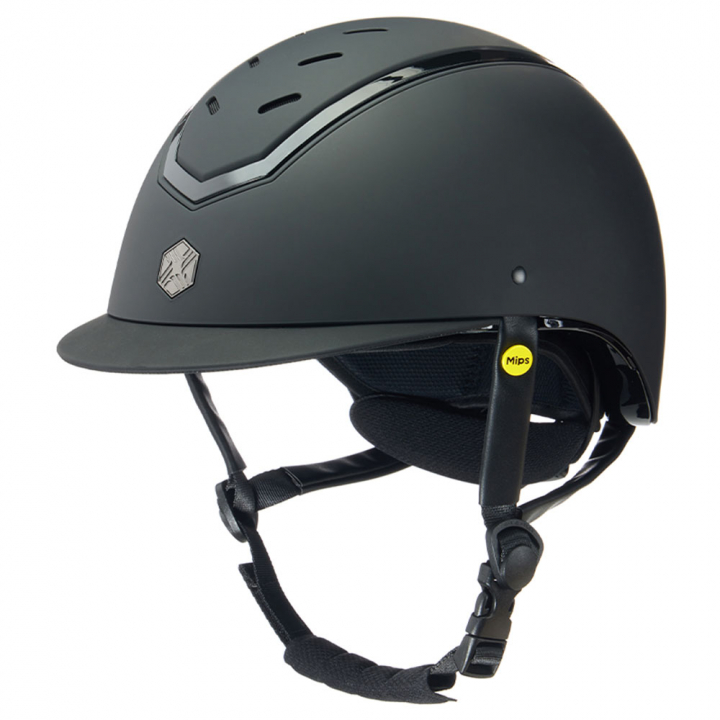Charles Owen not only handcrafts all their riding helmets, but they also set high standards at every stage of the process – whether it's about comfort, style and design, or quality and safety. The Kylo model, here with a matte black surface and high-gloss details, is no exception and, in addition to an incredibly low weight and MIPS® safety system, has been certified according to three international safety standards.
With extensive ventilation, Charles Owen guarantees optimal airflow, and the included liner is removable for easy cleaning or replacement. The smooth quick-release buckle, placed on Kylo's adjustable faux leather chin straps, ensures the helmet stays in place, while the adjustable precision fit at the back ensures an exact fit.
Kylo is delivered in a durable, FSC-certified packaging made from recycled materials.
- MIPS® Safety System
- Approved for riding in all disciplines
- Maximum ventilation
- Adjustable precision fit at the back
- Removable inner pad
- Adjustable faux leather chin strap
- Quick-release buckle
- Peak in matt finish
- High-gloss details
- FSC-certified packaging made from recycled materials
Certifications
Approved according to the safety standards below, making the helmet suitable for riding in all disciplines.
- ASTM F1163-15
- PAS015:2011
- VG1 01-040 2014-12
Size & Fit
Kylo is equipped with a practical screw function at the back, simply to optimize the helmet's fit and size for your head. Refer to the size guide when choosing a size, and if you're between two sizes, we recommend choosing the larger one.
Sun Visor
Do you want a Riding Helmet MIPS Kylo EQx Matte Black/Black with a sun visor? No problem - Charles Owen has developed the same model both without and with a sun visor, so you can find a riding helmet that meets all your preferences.
MIPS®
The riding helmet is equipped with MIPS (Multi-directional Impact Protection System), which is a low-friction layer located under the lining inside the helmet. The rotational layer's task is to allow the head to move 10-15 mm in relation to the helmet in all directions during oblique impacts, with the aim of reducing the rotational movement the head is subjected to during a fall where the head strikes. This reduces the risk of concussion or other brain injuries.









